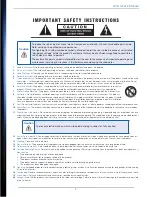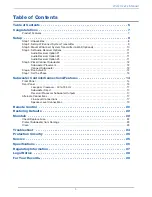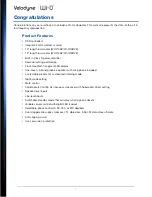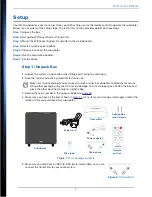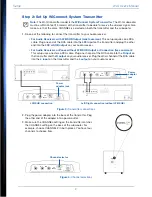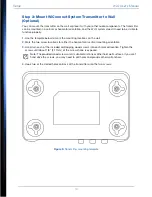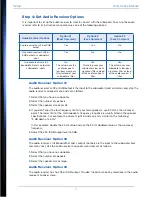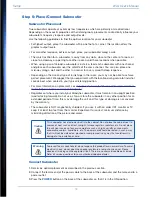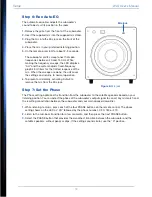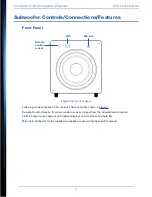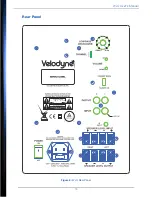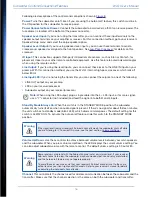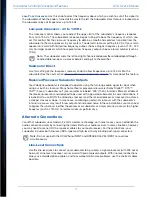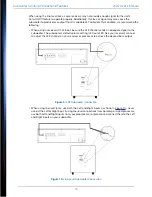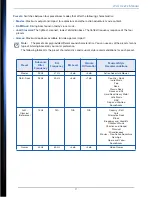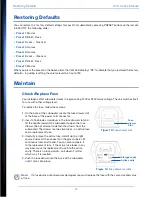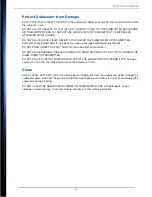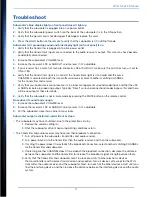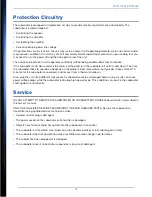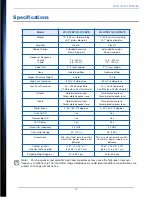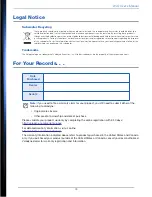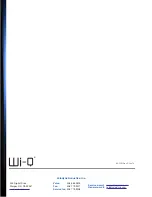
17
Subwoofer Controls/Connections/Features
Wi-Q User’s Manual
Low-Pass Crossover:
Use this knob to select the frequency above which you wish to cut off the signal to
the subwoofer. When the knob is turned all the way to the left, the Subwoofer Direct feature is invoked and
the subwoofer plays all frequencies up to 135 Hz.
Low-pass Crossover - 40 to 135 Hz
The crossover control allows you to adjust the upper limit of the subwoofer’s frequency response
from 40 to 135 Hz. The subwoofer’s response begins rolling off above the frequency at which you
set this control. Set the crossover frequency to obtain a smooth and seamless transition from the
subwoofer to the main speakers in your system. The default crossover setting is 80 Hz. If your main
speakers are small with limited low frequency output, choose a higher frequency (such as 100 - 120
Hz). For larger speakers which have greater low frequency output, choose a lower number (such as
70 Hz).
Note:
The subwoofer sums the left and right channels and passes the combined signal through
an adjustable low-pass crossover before sending it to the amplifier.
Subwoofer Direct
Use this setting on the low-pass crossover knob to allow frequencies up to 135 Hz into the
subwoofer. See the next section,
Receiver/Processor Subwoofer Outputs
for more about this feature.
Receiver/Processor Subwoofer Outputs
Your Velodyne subwoofer is designed to operate using the full-range audio signal for input when
using our built-in crossover. Many home theater processors/receivers (Dolby Digital™, DTS™,
THX™) have a “subwoofer out” jack (sometimes labeled “LFE”) that is internally filtered, settable at
the receiver/processor, and designed to be used with a powered subwoofer. In some installations, it
is beneficial to use BOTH the Velodyne crossover and the receiver/processor crossover, to achieve
a steeper crossover slope. In rare cases, combining an external crossover with the subwoofer’s
internal crossover may result in low output and increased noise. In these installations you may need
to bypass the crossover in either the processor or subwoofer, or simply set one crossover to a higher
frequency (such as 120 Hz) to restore maximum performance.
Alternate Connections
Your Wi-Q subwoofer uses modern 2.4 GHz wireless technology, so in most cases you can establish the
audio connection simply by connecting the transmitter to your audio receiver. In some situations, however,
you may need to connect RCA or speaker cables to your audio receiver. For these situations, your
subwoofer includes both line-level (RCA-type) and high-level (5-way binding post-type) connectors.
Note:
Do not use both the RCA/Phono INPUT and SPEAKER LEVEL INPUT connections
simultaneously.
Line-Level Connections
Use the line-level jacks to connect your subwoofer to a pre-amp, a signal processor (with LFE out or
Sub-out), a line-level crossover, or a receiver with pre-amp level outputs. With line-level connections,
always use shielded phono cables, and to avoid potential noise problems, use the shortest cables
possible.

